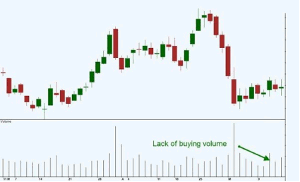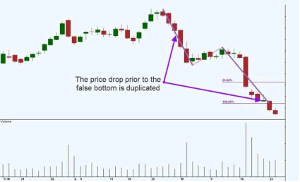Most investors and traders seek out market bottoms, so they can be first to buy, but this is also their downfall as most get in too early, writes Brandon Wendell of Online Trading Academy.
Many people accuse me of being too bearish while trading and analyzing the markets. While this may be true, I also realize that markets and securities move faster to the downside due to the fear factor. Fear is a dominant emotion in investing and trading and is the cause of bearish moves. This fear can come from being afraid of exiting a profitable position too late, or the fear shows from holding on to a loser as the markets are dropping rapidly against you. We do not need to be gripped by this fear. In fact, we can profit from it.
I like to identify patterns in order to trade with a higher probability of success. The theory is that if you can recognize the pattern early enough and enter before the masses, you can profit from the predictable actions of the mass investors as they perpetuate the pattern shown. You must be in early and out early as well. This does involve skill. Let’s examine one of my favorite patterns and how to properly trade it.
I learned a great pattern from Mike McMahon that he called the "pioneer pattern." The pioneer pattern is based on human psychology. Most investors and traders were taught to buy low and sell high. This makes them seek out the bottoms of the markets so they can be first to buy. It is also their downfall as most get in too early.
Let’s examine a typical move down from supply. We see that the markets make what appears to be a bottom. However, this move to the upside is started by traders taking profits from their short positions, not a true change in trend. Note the lack of volume in the bullish candles, as well as no bottom wicks on the candles.
These are the pioneers who are buying at the first sign of any buying pressure. They want to be first and buy the bottom. They get stuck with high prices as the shorts finish closing their positions, and the overall trend resumes without any real change in sentiment. Typically, the move that preceded the pioneers will duplicate itself when the trend continues, the exception being when strong demand is in the way.
The difference in the price action when the real bottom is achieved will typically have increased buying pressure demonstrated by increased volume and bottom tails on the candles. All of this usually occurs at a level of previous demand from a larger time frame.
Keep an eye out for the signs of a false bottom, and do not get caught trading with the novice pioneers!
By Brandon Wendell, Instructor, Online Trading Academy




















